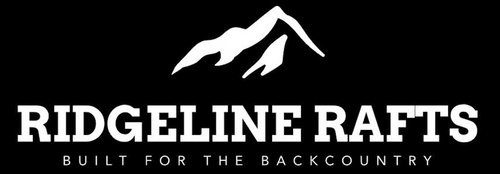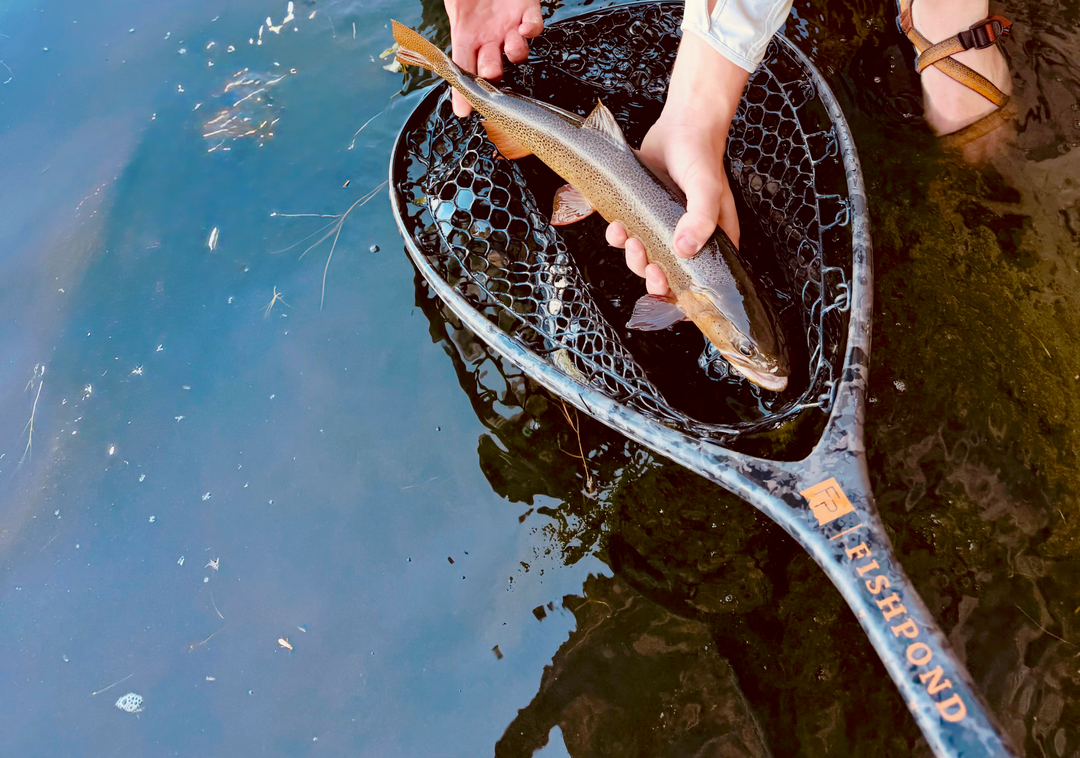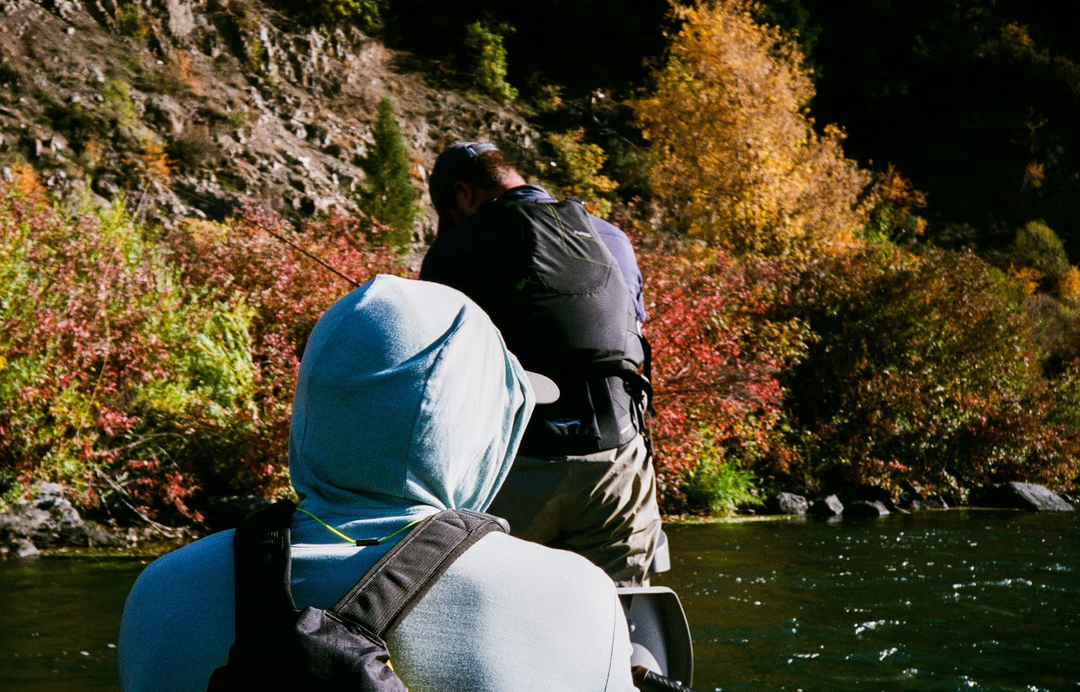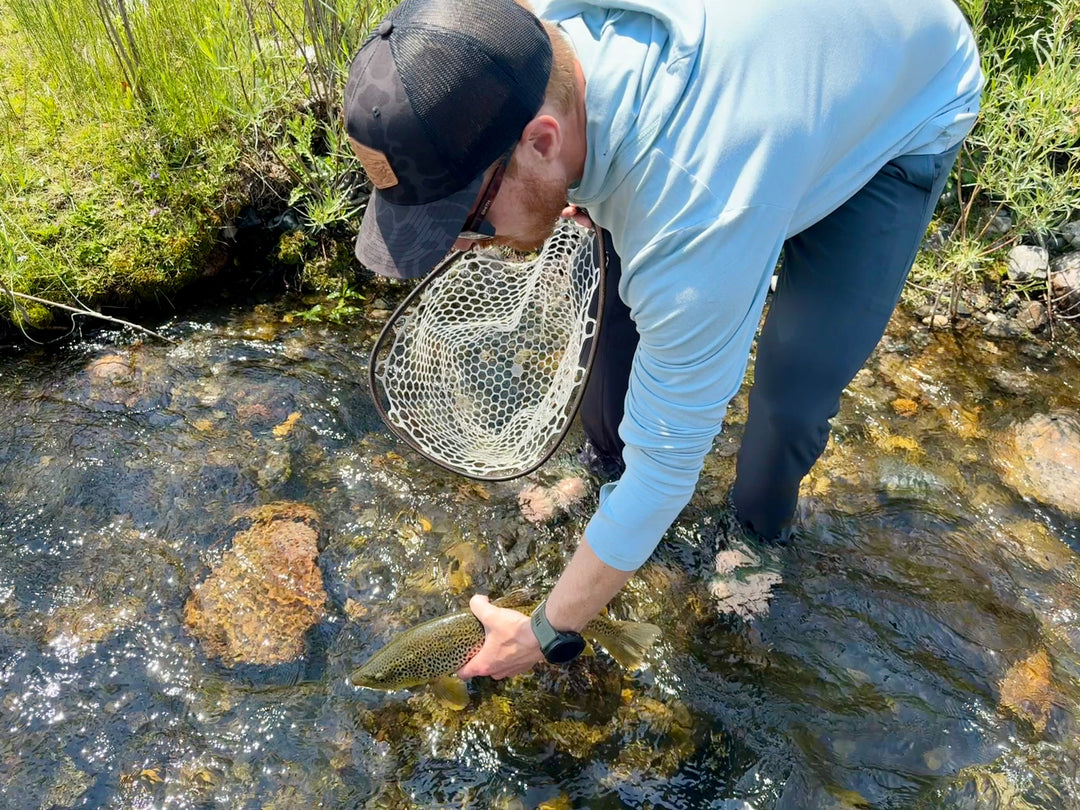Inflatable Fishing Boat: 6 Core Differences Compared to Drift Boats
When it comes to fly fishing, few debates are as lively—or as important—as comparing inflatable fishing boats and drift boats. Both have carved out significant places in angling history, both can get you into fish, and both have a loyal following among fly fishers. But over the past decade, advances in materials and design have shifted the balance. A trend toward inflatable fishing boats—driven by lighter, more durable materials and innovative construction—has influenced many anglers' preferences. Inflatable fishing boats now offer anglers versatility, portability, and performance that drift boats, with all their tradition, can’t always match. As a result, inflatable fishing boats have become increasingly popular among anglers who value these advantages.
For anyone exploring the idea of fishing from a boat—whether on tailwaters or freestone rivers—understanding these six core differences can make your decision easier:
-
Cost
-
Weight & Portability
-
Durability
-
Stability & Handling
-
Access
-
Storage & Maintenance
Each section below serves as an overview, linking to deeper, dedicated articles for anglers who want the full details.
1. Cost
Cost is often the first consideration when choosing between drift boats and inflatable fishing boats, and it’s no surprise why. A good boat (inflatable fishing boat or drift boat) is an investment. A new fiberglass drift boat start in the $10,000–$15,000 and frequently use cheaper accessories to keep the costs down. Whereas the high-end of drift boats are closer over the $30,000 mark.
Beyond the initial purchase price, owning a drift boat comes with a series of hidden and often unavoidable costs. Storage alone can be significant—you either need to pay for a facility that can accommodate a large fiberglass or aluminum hull, or you must dedicate a substantial portion of your garage or yard to keep it safe. That’s space you can’t use for other equipment, vehicles, or projects, and for many anglers, it’s a real trade-off. On top of that, winterizing a drift boat—draining water systems, protecting sensitive materials, and prepping it for freezing temperatures—is a labor-intensive process that often comes with extra fees if you hire a professional or invest in specialized materials.
Even before you consider maintenance, these storage and prep requirements add up. Then there are the unpredictable costs of repairs. Drift boats are rigid and, despite their strength, they can suffer from gel coat cracks, dents, or structural damage from rocks, logs, or transport mishaps. Repairing a drift boat may involve costly trips back to the OEM or specialized shops, labor fees, and expensive replacement parts. These costs can easily dwarf the initial investment over the lifetime of the boat. This is a huge consideration when looking at used drift boats as well; just because it's cheap doesn't mean it won't cost you if you don't inspect it throughly beforehand.
Contrast that with a high-quality inflatable fishing boat. Modern rafts made from heavy-duty PVC or urethane, often featuring drop-stitch or I-beam floors, oar frames, rod holders, and integrated gear systems, require none of the cumbersome storage considerations of a drift boat. You can deflate and roll them, storing them in a garage, shed, or even a larger closet without sacrificing valuable space. Winter preparation is minimal—clean, dry, and store. Repairs, if ever needed, are simple and inexpensive, often fixed on the river in minutes with a small patch kit which is exceedingly rare.
For anglers who value efficiency, flexibility, and fewer headaches, inflatables make a compelling case as a smarter investment—not just in dollars, but in time spent on the water catching fish, and enjoying the river for a longer time period throughout the year.
For a full deep dive on cost comparisons: Inflatable Fishing Boat vs. Drift Boat — Cost
2. Access
One of the most transformative advantages of inflatable fishing boats is the expanded access they provide to rivers and fishing spots. Drift boats are limited by ramps, flow levels, and legal access points. If water levels drop too low, navigating a drift boat can become risky—you risk hitting the bottom, scraping your hull, or getting stuck in riffles. That means low-flow periods or smaller tributaries are often off-limits, limiting the water you can fish and, ultimately, the number and quality of fish you encounter.
Inflatable fishing boats, with their shallow draft and lightweight design, open up rivers and stretches that drift boats simply can’t reach. Anglers can float low flows safely, work tight channels, and explore shallow riffles or remote backcountry runs that would be impossible for a heavier, deeper-drafted hull. This access often means fishing water that is far less pressured, giving you a better chance at hooking into larger, more educated trout and enjoying stretches of river where other anglers rarely tread.
For example, late fall tailwaters often see flows drop significantly. Most anglers either wait for snowfall or eagerly transition to hunting season, leaving prime fishing virtually untouched. Inflatable rafts allow anglers to stay on the water, fishing low, clear flows and reaching prime pockets and seams that would be impossible in a drift boat. The result is more opportunity for productive casts, higher-quality fish, and a more rewarding day on the river.
Even during the height of summer, inflatable rafts can access runs, side channels, and tree-lined sections that are off-limits to drift boats. This flexibility means you can find less-pressured fish, avoid crowded ramps, and explore water that few others see, dramatically improving your chances of success.
There’s also a smaller, but still important, advantage in terms of launch points. Inflatable rafts can be hand-launched from steep banks, shallow slides, or tricky backcountry entry points, such as the Teton Slide on the Snake River. While this isn’t their primary advantage, it’s a convenience that allows anglers to start fishing where larger boats simply can’t go, saving time and effort while opening up new opportunities.
In short, the access advantage of inflatable fishing boats isn’t just about launching anywhere—it’s about expanding your fishing range, targeting less-pressured water, and increasing your chances of catching more and bigger fish. By reaching stretches that drift boats can’t safely navigate, anglers gain both strategic and practical advantages that can turn an ordinary day on the river into an exceptional one.
More access means more opportunities to cast to less spooky fish and more times than not you can pull some hawgs out of those shallow haunts. My biggest fish to date ate a trout slider in a 4-5" deep riffle with only 5-7" of depth for us to float through. If you're going to spend $10k+ on a premium boat you might as well be able to use it 12 months out of the year and not be limited to certain rivers or sections of rivers.
Full guide coming soon: Inflatable Fishing Boat vs. Drift Boat — Access
3. Weight
Weight plays a crucial role in how a boat performs on the water, affecting everything from maneuverability to casting stability. Drift boats are inherently heavy. A typical 14–16-foot fiberglass or aluminum drift boat can weigh anywhere from 300–500 pounds before you even add oars, gear, or passengers. This mass gives the boat momentum and tracking stability in wide, steady rivers, but it also makes it less responsive in tight, technical, or shallow water. Heavy drift boats can be slow to pivot, and subtle adjustments behind the oars often require strength and experience—making delicate maneuvers for dry fly presentations or streamer drifts more challenging.
Inflatable fishing boats, by contrast, are significantly lighter, often weighing less than 150 pounds for a 12–14-foot model. That lighter weight translates directly to performance advantages on the water. Inflatable rafts float higher, reducing draft and allowing anglers to navigate shallow sections, rocky riffles, and gravel bars without dragging the hull or getting hung up. The reduced mass also makes them incredibly responsive to rowing strokes, letting anglers slow down, pivot, or fine-tune their drift with precision. Subtle course corrections—essential when fishing upstream casts, reading seams, or maintaining a natural drift—are much easier in a lightweight raft than in a heavy drift boat.
The difference is particularly noticeable in rivers with variable flow or tight channels. On the Snake River in Idaho, for instance, drift boats handle main channels efficiently but can feel sluggish when threading through narrower bends or adjusting for changing currents. Inflatable rafts, with their lighter weight, allow for quicker, more agile movements, giving anglers better control over presentation, line management, and positioning near key holding water.
Weight also affects stability differently depending on conditions. Heavy drift boats are less susceptible to tipping in steady current, but they are harder to recover when push the boat off course and quick adjustments are needed. Inflatable rafts, while lighter, are inherently more buoyant and forgiving. They absorb bumps and waves, offering a stable platform for casting even in rough water. The combination of light weight and buoyancy allows anglers to focus on reading water and landing fish rather than constantly compensating for the boat’s momentum.
Finally, lighter weight impacts overall enjoyment and stamina. Rowing a drift boat through strong currents or adjusting position repeatedly in a day can be physically taxing, especially for less experienced anglers. Inflatable boats require less effort to maneuver, allowing more energy to slow the boat down more frequently, with greater ease to get one more drift or cast with a streamer in a hole.
In short, weight isn’t just about portability—it’s a critical factor in how a boat moves, responds, and performs on the water. Inflatable fishing boats turn their lighter weight into a functional advantage, giving anglers more control, subtlety, and ultimately, more chances to catch fish.
Full guide coming soon: Inflatable Fishing Boat vs. Drift Boat — Weight & Portability
4. Stability, Safety & Handling
Stability is one of the most noticeable differences between drift boats and inflatable fishing boats, and it often defines the angling experience on the water. Drift boats are widely recognized for their stability, and for many anglers, that stability is what first comes to mind when comparing them to inflatables. However, the very factors that make drift boats stable—their weight and width—also make them harder to row, maneuver, and adjust quickly in the river.
A heavier boat sits deeper in the water, increasing drag and requiring more effort to change direction or maintain precise positioning. Similarly, a wider beam improves lateral stability, reducing the risk of tipping when standing or moving inside the boat, but it comes at the cost of rowing efficiency. Anglers often notice that subtle adjustments, such as pivoting for an upstream reach cast or following seams through faster currents, require stronger strokes and more physical effort. In other words, the same design features that make drift boats forgiving to stand in also make them less nimble, particularly in technical water.
Drift boats can also be less forgiving in truly rough water. Large waves, swirling currents, or rocky boulder gardens can cause sudden tilts and rocking. Correcting for these motions is physically demanding and often distracts from fly presentation and casting control, which are critical to catching fish. Even experienced rowers must constantly anticipate how the boat will react to changes in flow, making fine adjustments behind the oars a constant task.
Inflatable fishing boats, by contrast, achieve stability through buoyancy and weight distribution rather than sheer mass. The air-filled tubes and elevated floors keep the boat afloat and balanced without requiring it to sit deep in the water. This allows inflatable rafts to pivot quickly, move laterally with minimal effort, and hold steady even in choppy or fast-moving water. Anglers can make precise upstream casts, maintain a straight line on the drift, and react to fish strikes without fighting the boat’s momentum.
A practical example comes from the B section of the Green River at Red Creek Rapids. As Spinner Fall Guide Service notes: “Red Creek Rapid sinks a boat or two every year. Rafts can run it easily, but drift boats require advanced oar skills to safely navigate it.” While skill is still essential for any watercraft, inflatable rafts provide a more forgiving platform, especially for challenging rapids or unexpected currents.
The difference in stability philosophy—weight and width versus buoyancy and design—also impacts how anglers experience the river. Drift boats demand continuous adjustment and careful rowing, particularly when precision is needed for dry fly fishing or streamer work. Inflatable rafts, while still requiring competent handling, allow anglers to focus more on reading the water, controlling the fly line, and executing casts, rather than constantly compensating for the boat’s deeper draft or wider beam.
For anglers seeking both safety and efficiency, understanding this trade-off is key. Drift boats provide predictable stability, but that stability comes with physical costs and slower responsiveness. Inflatable fishing boats offer a balance: excellent stability through buoyancy while remaining highly responsive to subtle strokes, current shifts, and maneuvering demands.
Full guide coming soon: Inflatable Fishing Boat vs. Drift Boat — Stability & Handling
For a deeper dive into the physics behind these differences, check out Using Physics to Understand Fishing Raft Design and Intent.
5. Durability
Durability is one area where assumptions can mislead anglers. Drift boats are traditionally perceived as “bulletproof,” with fiberglass or aluminum hulls that withstand years of use. While they are undeniably strong, rigid boats are also unforgiving. Hit a boulder at the wrong angle, and you could face cracked gel coat, dents, or even structural damage.
Inflatable fishing boats, especially premium models, are engineered to handle exactly this type of rough river use. Materials like urethane or PVC and inflatable floors allow rafts to flex and absorb impacts instead of breaking. Welded seams and reinforced tubes make modern inflatables extremely resistant to punctures and abrasions. When you take hit in a drift boat the boat can't absorb any of that impact so everyone in the boat feels that much more than if a raft hit the same rock as the tubes will absorb the impact.
Durability also includes resistance to UV, abrasion, and general wear. Drift boats require regular maintenance: waxing, paint touch-ups, and occasional structural checks. We already touched on this a bit in the cost section, but again a common problem with drift boats is repairing cracks or dents, which can be time-consuming and require specialized materials, whereas inflatable boats need minimal care beyond washing and drying after use. A small puncture can be patched on the river in minutes, keeping downtime low.
Advances in technology have created new, more durable inflatable fishing boats, with improved materials and construction methods that extend their lifespan and performance. Durability isn’t just about surviving rocks—it’s about confidence in where you can your boat. When you're not stressing about damaging the hull you can enjoy all of the river, explore a lot more of it, and yell at your buddy to keep is rod tip closer to the water so he stops botching hook ups. Inflatable fishing boats make this easier, which often results in more fish caught and more enjoyment on the river.
Full guide coming soon: Inflatable Fishing Boat vs. Drift Boat — Durability
6. Storage
Storage has a double edge meaning here: On the water storage within the boat itself and also storing the boat when it's not on the river.
On-Boat Storage
One of the common concerns about inflatable fishing boats is storage capacity while on the water. Guides often prefer drift boats for this reason—they can carry multiple fly boxes, coolers, tackle bags, and more gear than most anglers will ever realistically throw in a single lifetime. Drift boats are essentially floating tackle shops, with room for everything from spare rods to again - boxes of extra flies.
The reality, however, is that most anglers don’t need that much storage. A single boat box, like a Yeti GoBox 60, can hold all the gear you will ever need for a full day on the river—flies, tippets, leaders, tools, and personal essentials. Inflatable rafts can easily accommodate one or two boat boxes along with a cooler and a small tackle bag, giving you plenty of accessible storage without overloading the boat. Modern rafts also offer options for rod holders, net clips, and attachment points for gear, meaning everything stays organized and within reach.
While drift boats excel at carrying massive amounts of equipment, it’s worth asking whether that’s necessary for your fishing style. For the majority of anglers, inflatables provide more than enough on-board storage to stay fully equipped and comfortable throughout the day, without sacrificing stability or handling.
Storing the Boat
Where inflatables really shine is in off-season or at-home storage. Drift boats require significant space—a garage, shed, or dedicated storage facility—and often need trailer access for moving in and out of storage. Winterizing is also a consideration: you need to protect the hull from freezing temperatures, sun exposure, and moisture. Improper storage can lead to cracking, gel coat fading, or aluminum corrosion. Maintenance can be time-consuming and sometimes costly if professional repairs are required.
Inflatable fishing boats eliminate nearly all of these headaches. When deflated, a raft can be rolled and stored in a garage, shed, or even under a bed if needed. Rinsing after use, drying, and occasional patching of minor abrasions is all that’s required to keep it in top condition. Inflatable rafts avoid trailer maintenance, shrink-wrapping, or regular hull cleaning, saving both time and money. Properly cared-for inflatables can last for decades, making them a low-maintenance, long-term investment.
This combination of practical on-water storage and effortless off-season storage allows anglers to focus on fishing rather than worrying about space, prep, or upkeep. Whether you’re heading out for a day trip or a multi-day float, inflatables make it easy to carry exactly what you need and store the boat efficiently, keeping your focus on casting, drifting, and catching fish.
Full guide coming soon: Inflatable Fishing Boat vs. Drift Boat — Storage & Maintenance
Conclusion
Both drift boats and inflatable fishing boats play an essential part in fly fishing history. Drift boats offer great tracking, operate wonderfully on large rivers, and the fun charm of classic craftsmanship. They remain an excellent choice for popular rivers and tailwaters where access, weight, and storage are less of a concern.
Inflatable fishing boats, however, represent the evolution of angling. Advances in technology have created new opportunities for anglers, making inflatables more attractive and versatile than ever before. They combine affordability, portability, durability, stability, access, and ease of storage into one versatile ride. Inflatable boats can help anglers catch more fish by reaching remote spots and adapting to changing river conditions.
Whether you’re seeking side channel solitude on a busy summer weekend, chasing tailwater trout, or dreaming of the backcountry during the boring hours of work, inflatable fishing boats provide the freedom to focus on what matters most: catching fish, enjoying the river, and spending time with family and friends.
Explore the complete guides for each section:
Weight & Portability
Durability
Stability & Handling
Access
Storage & Maintenance




